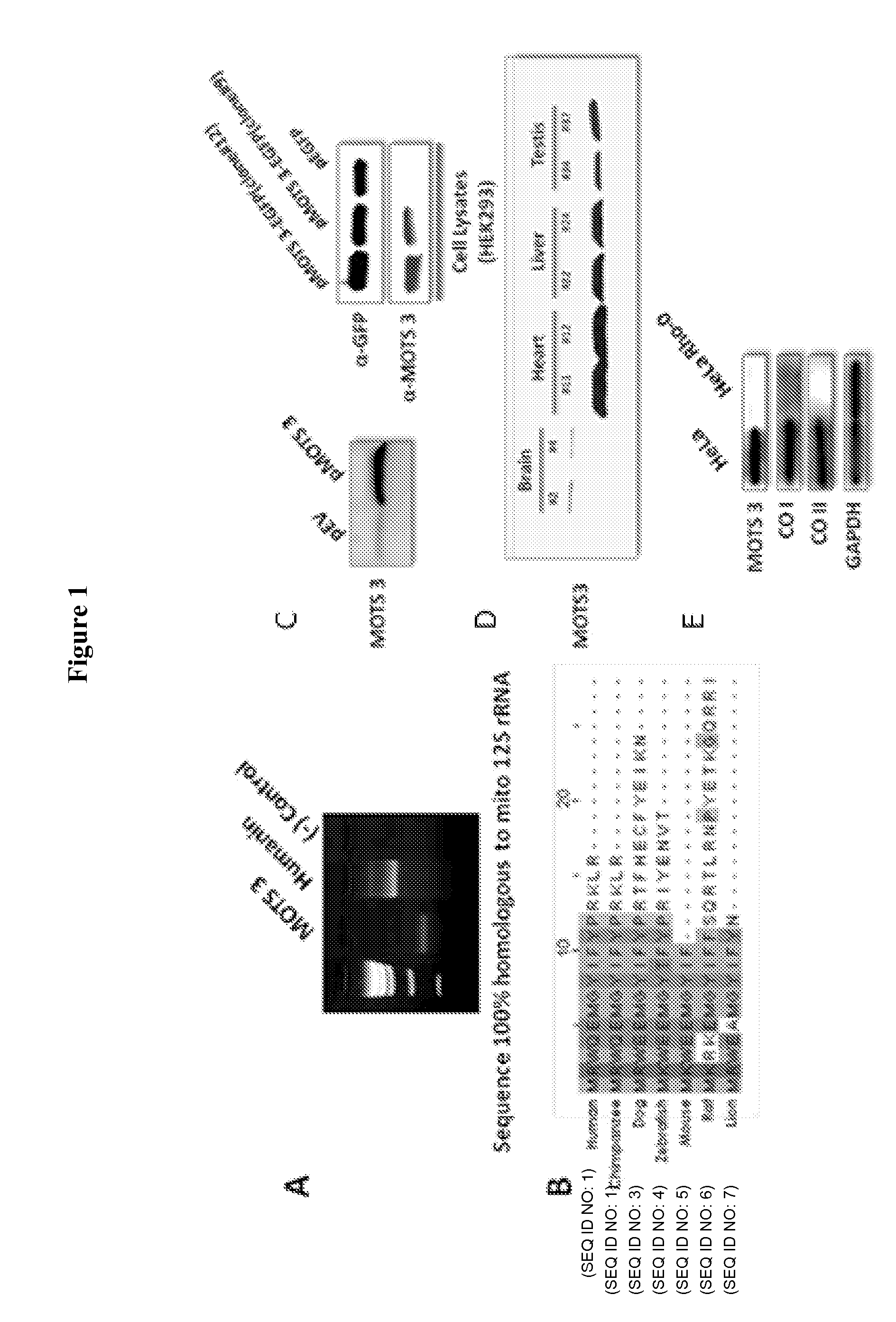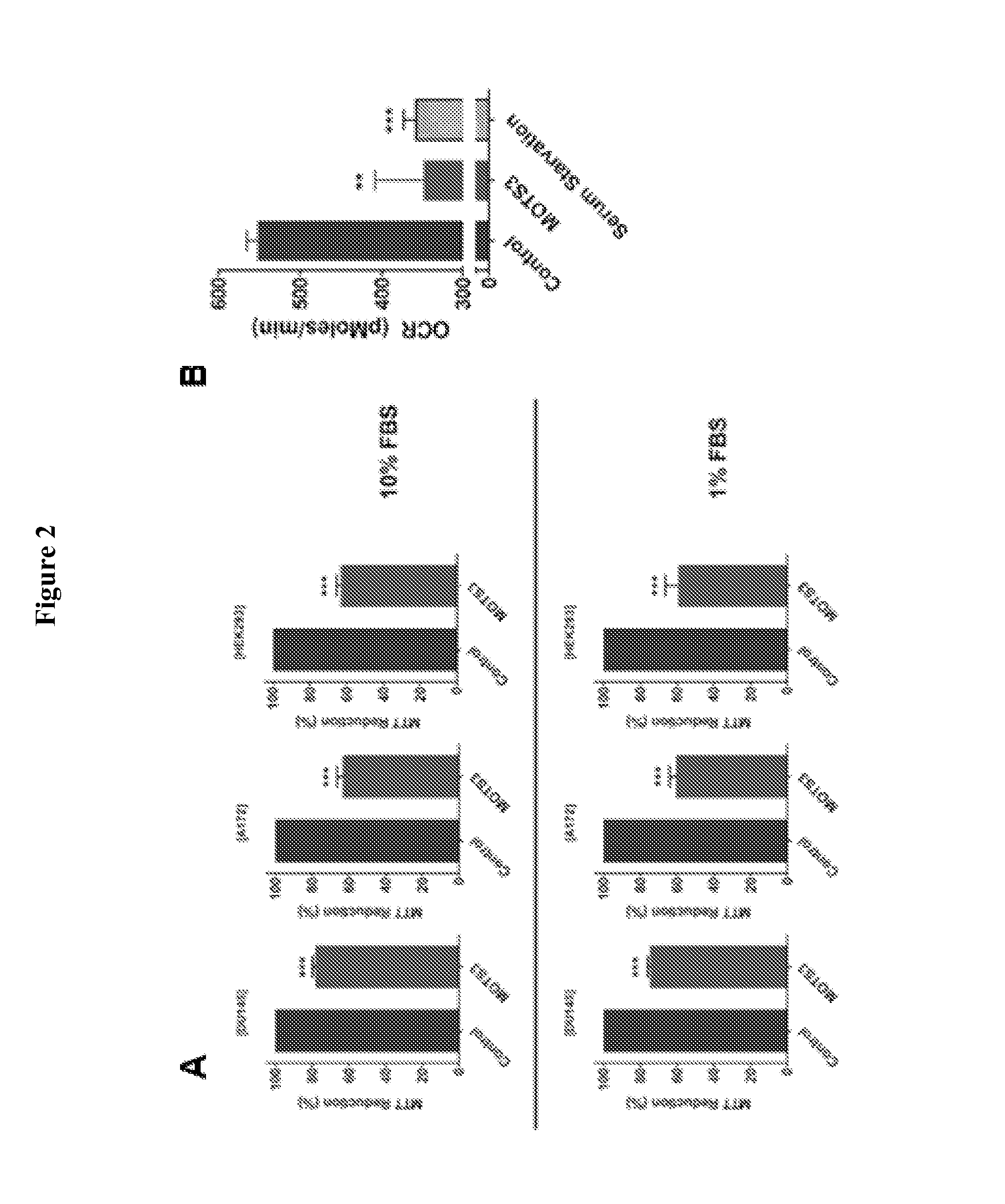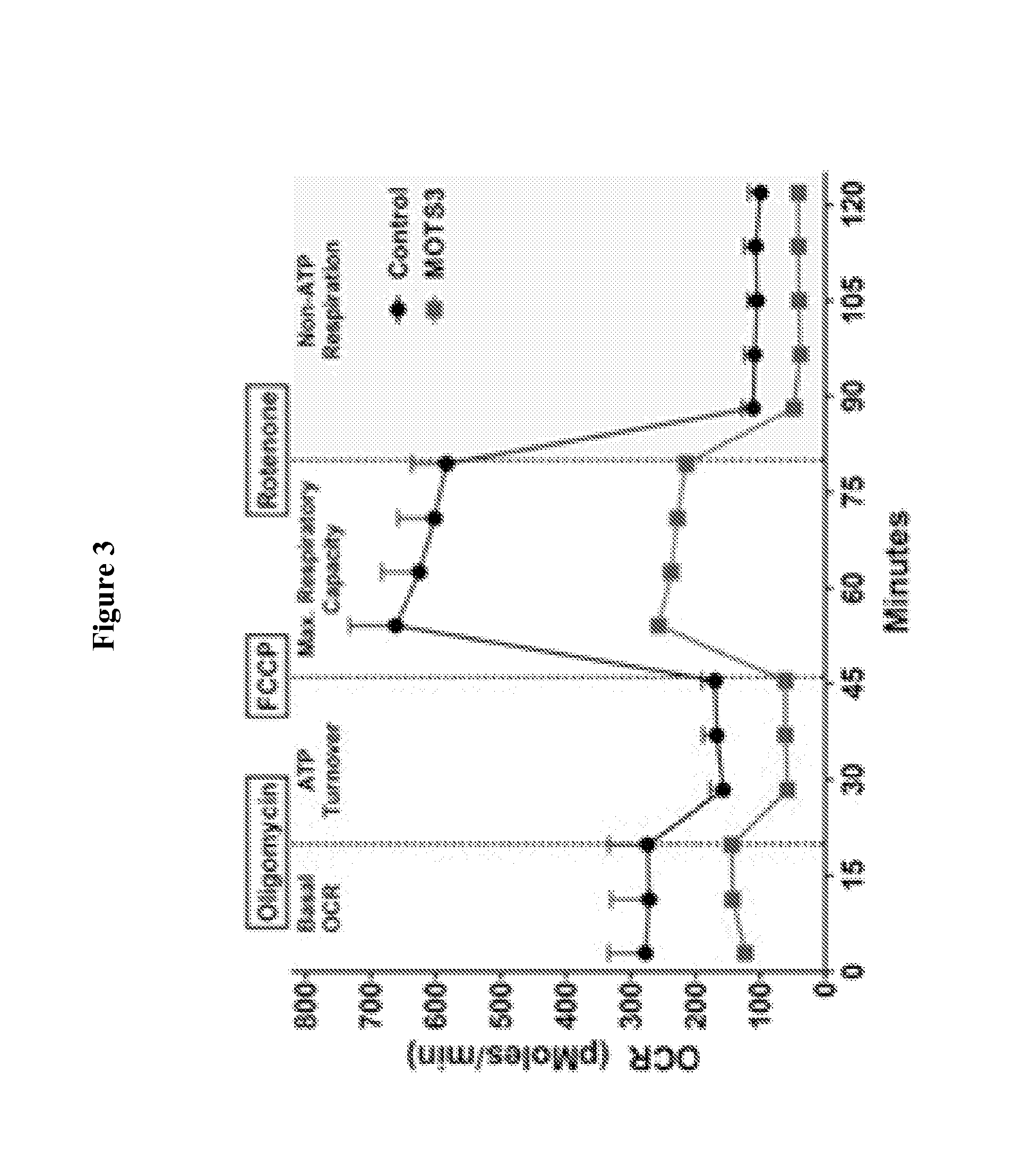Mitochondrial-derived peptide mots3 regulates metabolism and cell survival
a mitochondrial-derived peptide and mot3 technology, applied in the field of mitochondrial-derived peptides, can solve the problems of retrograde signaling and poorly understood biological processes
- Summary
- Abstract
- Description
- Claims
- Application Information
AI Technical Summary
Benefits of technology
Problems solved by technology
Method used
Image
Examples
example 1
[0135]3′ RACE analysis revealed that MOTS3 is polyadenylated, similar to HN (FIG. 1A). After initial screening as described below, MOTS 3 was determined to have potent biological activity, and its peptide sequence is well conserved in various species (FIG. 1B). We have generated anti-MOTS3 polyclonal rabbit antibodies that can detect endogenous and overexpressed MOTS3 by cloning the ORF into an expression vector in cell culture as well GFP-tagged MOTS3 (FIG. 1C). Using these validated antibodies, we can detect MOTS3 in rat heart, liver, and testis at similar molecular weights and in the brain at a slightly higher molecular weight (FIG. 1D). The expression level appears to be highest in the heart, an organ with one of the highest mitochondrial density. Further, rho-O HeLa cells, which have been purged of mitochondrial DNA using ethidium bromide, do not express MOTS3 as well as other well described mitochondria-encoded proteins such as cytochrome oxidase I and II (COI and COII), confi...
example 2
[0136]Exogenous treatment of synthetic MOTS3 causes a mitochondria-dependent metabolic shift, measured by oxygen consumption rate (OCR) measured by Seahorse technology as wells as MTT reduction (under 10% and 1% FBS conditions) (FIG. 2). Both exogenous MOTS 3 treatments with synthetic peptides (FIG. 3), as well as the endogenous expression by cloning (FIG. 4) inhibited mitochondrial activity. Notably, exogenous MOTS3 treatment reduced cellular ATP levels and mitochondrial activity (MTT), which simultaneously occurred with increased autophagy (FIG. 5).
[0137]MOTS3 treatment induced an increase in glucose uptake as measured by residual glucose levels in the culture medium and by fluorescence-labeled glucose analog uptake (FIG. 6A and FIG. 6B). As expected, lactate secretion was increased in keep with elevated glucose consumption (FIG. 6A). Notably, by 96 hours of MOTS3 treatment, when most of the glucose in the medium has been consumed, AMPK activation is significantly higher in the MO...
example 3
[0139]In mice, 4 days of MOTS3 injections (i.p.; 0.5 or 5.0 mg / kg / day) led to significant weight loss without significant alteration of food intake (FIG. 11). Further, in agreement with our in vitro studies, liver mitochondrial respiration capacity was diminished following MOTS3 treatment at both tested doses (FIG. 11). Notably, MOTS3 treatment significantly reduced blood glucose levels (FIG. 12A) and also had higher insulin levels (FIG. 12B), suggesting increased glucose uptake similar to that observed in cell culture (FIG. 6).
PUM
| Property | Measurement | Unit |
|---|---|---|
| Fraction | aaaaa | aaaaa |
| Fraction | aaaaa | aaaaa |
| Fraction | aaaaa | aaaaa |
Abstract
Description
Claims
Application Information
 Login to View More
Login to View More - R&D
- Intellectual Property
- Life Sciences
- Materials
- Tech Scout
- Unparalleled Data Quality
- Higher Quality Content
- 60% Fewer Hallucinations
Browse by: Latest US Patents, China's latest patents, Technical Efficacy Thesaurus, Application Domain, Technology Topic, Popular Technical Reports.
© 2025 PatSnap. All rights reserved.Legal|Privacy policy|Modern Slavery Act Transparency Statement|Sitemap|About US| Contact US: help@patsnap.com



